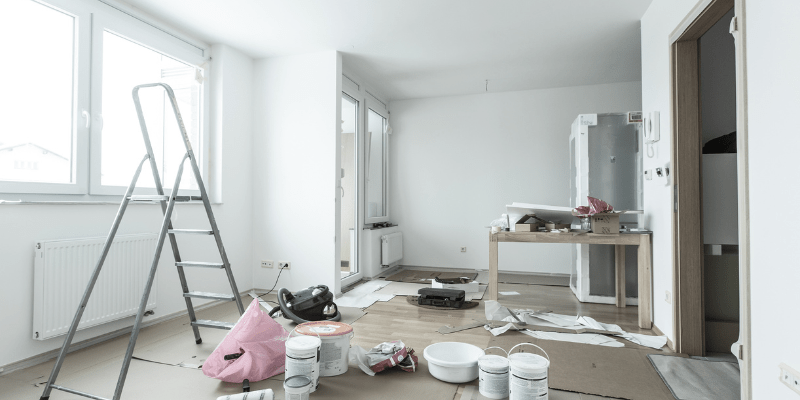It is important to pay special attention to the type of paint being used as well as the technique used to apply paint to give the right effect. Follow these tips to prevent that from happening.
When choosing a paint, it is important to consider the traffic in that area. If you chose the wrong type of paint, it can result in keeping your walls clean of dirt, dust, scuffs and scrapes and endless task. When you choose the right type of paint, it can make the daunting task of having clean walls much more obtainable.
Two other factors that will impact your ability to keep the walls looking pristine will be the color you choose as well as the method of application or technique used to apply the paint.
Having clean walls, no matter the location, is a possibility if you avoid these common painting mistakes.
1. Did You Prep The Walls?
Preparation work is a tedious task, that is no secret, but the best painters know that how well you prep is a direct correlation of the over all result.
Clean the walls before painting. There are a few options for cleaning the walls, one of the most popular choices is using a trisoduim phosphate solution (TSP).
If you are noticing a large amount of stains or marks, you should use a primer to make sure that you have the proper coverage of paint. If you apply the paint without a layer of primer, your paint and paint color may possibly turn out spotted as the stains will be easy to see with a variation of paint.
2. The Sheen Is Not The Right Choice For The Area
Most people typicially only think about the painting color when choosing paint missing the crucial step of choosing a sheen based off of the result you are looking for. To choose a sheen you should pay special attention to the result you are hoping to have. The sheen is the reflectiveness of the paint determining how glossy the walls look.
Sheens such as a high-gloss, while the easiest to clean, show any imperfections under the paint very easily. Because of how easily this sheen is cleaned, you will see this sheen being used most often on kitchen cabinets and trim.
On the other end of the spectrum you have a matte sheen. This is the least reflesctive and glossy option, and comparabily to the semi-gloss sheen much harder to maintain a clean look. Matte sheens, while cover the surface area and hide blemishes well are not good for high traffic areas. When using a matte sheen washing the walls can become difficult. To clean this type of paint, you have to use a light touch as vigourous technique and hard chemicals can damage the finish. This is why a matte option is best used in low traffic areas.
3. Are You Using Cheap Paint?
For a clean finish and to maintain the cleanliness on the walls, a quality paint is not optional.
Quality paint does come with a high price tag typically. To make sure that you are investing your money in the right paint, doing thisngs like considering the traffic, lighting and area are important. Make sure when you are picking out paint you look at the lable to identify the niche that that specific paint is for to know how the paint will function in areas like bathrooms, kitchens and hallways.
Considering premium level paints, while pricy, is a good way to secure your investment.
4. Did You Select The Right Painting Tools?
Painting tools like brushes and rollers tend to all blend together however there is a big difference within painting tools that directly effect the texture of the walls.
To determine what kind of application method you need, whether spray, roller, or brush, look on the can of paint you will be using. This will correctly advise you on the correct application method or technique that should be used so the result is what you are looking for.
Rollers with a thin nap are best in smooth surface areas while thickly-woven rollers can apply large amounts of paint well into deep, rough brick textures.
5. Are You Using Too Light Of A Paint?
To follow current paint trends, continue increasing the value of your home and encourage more light in a room, most people chose to paint using a lighter color.
While a lighter color is still an option for areas that become dirty quickly, avoid white. White, while pretty and clean, can be the hardest color to maintain cleanliness. If you have your heart set on a lighter color, try a “greige” or a cooler neutral color.
These colors will provide good coverage, brighten up a room all while making having clean walls possible.
Love this content? See more like it only once a month by subscribing to our newsletter!

